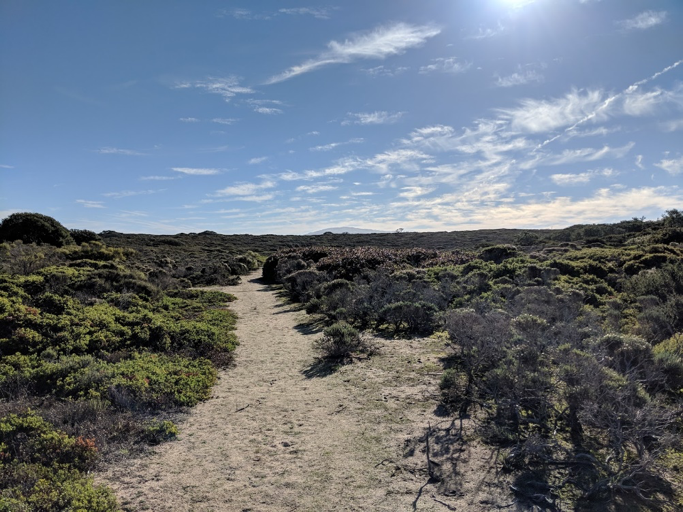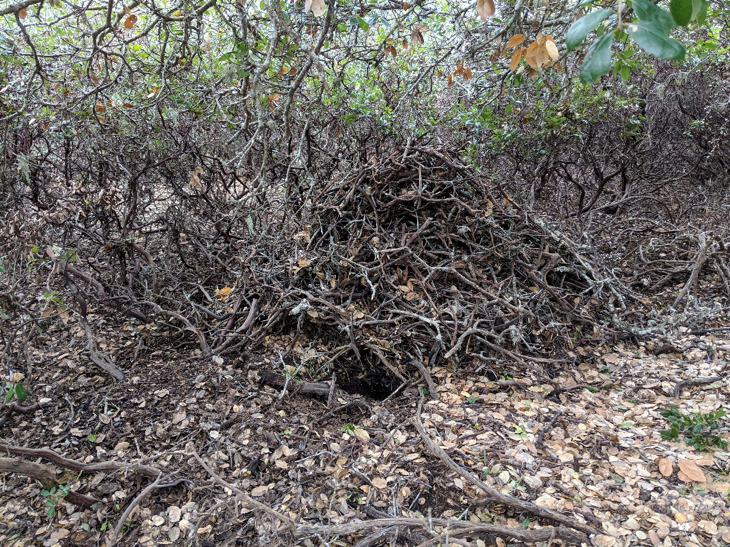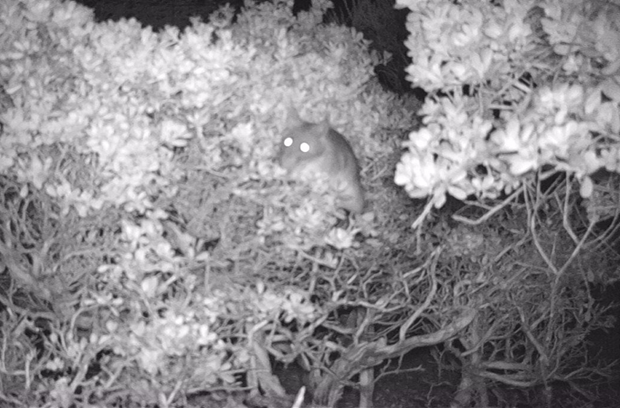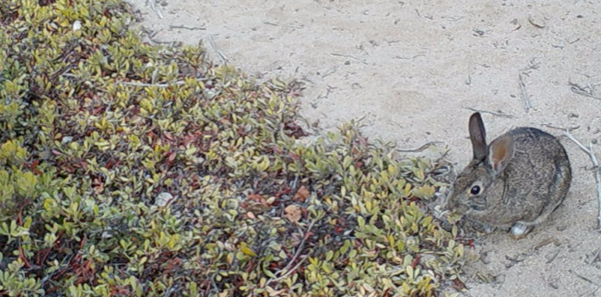
Figure 1: FONR chaparral on a December
morning.
At Fort Ord Natural Reserve in Marina, CA, you can find native plants growing in sand dunes, with patches of oak woodlands and dense chaparral growing throughout the reserve (Figure 1). On a quiet day, you can hear songbirds singing and feel the ocean breeze from the bay. Fort Ord Natural Reserve was once part of an army base but was added into the UC Natural Reserve System in 1996. Now a diverse and thriving ecosystem, the reserve is home to many endemic and endangered species. Today it serves as an outdoor classroom to many students at UC Santa Cruz and Cal State Monterey Bay.

If you look closely, throughout the reserve there are what looks like mini teepees underneath oak trees or in the chaparral shrubs (Figure 2). These are actually the nests of woodrats. The Monterey dusky-footed woodrat (Neotoma fuscipes luciana) is a packrat endemic to the Monterey Bay area. Woodrats collect the branches from their surrounding environment to build these complex nests. The nests actually contain designated rooms, such as a pantry where they can store food they forage (Carraway and Verts 1991). Woodrat nests also serve as housing for other small animals. Woodrats often take over an empty nest rather than building a new one. Brush rabbits (Sylvilagus bachmani) are also commonly seen darting around the reserve. Brush rabbits live in burrows underneath dense vegetation such as chaparral shrubs (Chapman and Litvaitis 2003). Woodrats and brush rabbits are the two prominent small browsers at Fort Ord Natural Reserve, feeding on the leaves, stem and fruits of woody plants.

Figure 3: Woodrat browsing at the top of
a manzanita shrub.
My research at For Ord Natural Reserve documented the way these two prominent browsers, share a common resource, the sandmat manzanita (Arctostaphylos pumila). The sandmat manzanita is endemic to the region, and is one of the dominant shrubs spread out throughout the chaparral of Fort Ord. Generally, it is rare to find two species sharing a common resource. Instead, they usually partition the resource to avoid competition. Sometimes, however, a resource is so common that species may be able to share it without directly competing with each other. I was curious to see if and how woodrats and rabbits were partitioning sandmat manzanita given its abundance. I hypothesized that woodrats and rabbits partition by shrub height. Although they are of similar size, woodrats and rabbits differ in that woodrats are known to climb, and rabbits generally do not. Therefore, woodrats would browse on the higher parts and rabbits would browse more on the lower parts of sandmat manzanita.
From late July to December, I used four trail cameras to passively observe the browsing behavior of woodrats and rabbits. Each trail camera was set to take 1-minute videos when triggered by motion. Twice a week, I moved the cameras to a different location on the reserve and fixed them in front of a sandmat manzanita shrub that had been browsed on recently. I also took photos of the shrubs on which the cameras were focused on and included a meter stick in the frame shot. These photos were later used to measure the browsing heights seen in the videos using ImageJ, an image analysis software program. I used JMP Pro 14 to compute a t-test between the browsing heights of rabbits and woodrats.

Figure 4: Rabbit browsing at the lower end
of a manzanita shrub.
Although I did observe woodrats browsing at the top (Figure 3) and rabbits at the bottom of manzanita shrub (Figure 4) like I predicted, there was no significant difference in the browsing heights of rabbits and woodrats. I was surprised to find evidence that woodrats and rabbits may be sharing a common resource without competition. This could be because sandmat manzanita is so abundant at Ford Ord that browsers do not have to partition the resource. Another explanation is that, due to the small sample size that I had of observed browsing activity (rabbit = 24, woodrat = 16), there is a real difference, but I did not have the power to detect it. A longer-term monitoring study could help tease these effects apart.
Nonetheless, this study helped us understand how animals share a common resources in a unique environment. Our results were surprising to find no evidence for competition. These results help scientists understand how species interact with each other and how changes in resource availability might affect species interactions.